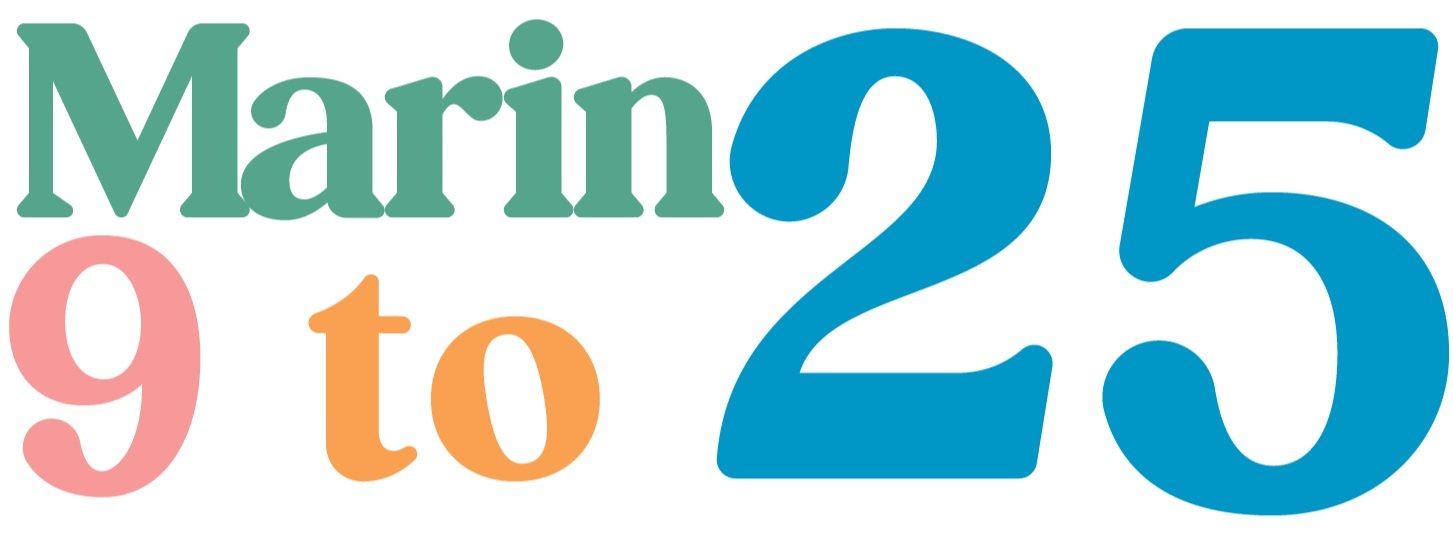Marin 9 to 25 Quarterly Meeting: September 29, 2022
Thank you to those who were able to attend Marin 9 to 25’s quarterly meeting, held both in person and on zoom on September 29! There was a great turnout, with 57 participants, including 32 youth between the ages of 9 and 25. Marin 9 to 25 Youth Co-chair Sammy Lee hosted the event in person and Marin 9 to 25 Advisor Mo De Nieva Marsh led the Q&A sessions following each presentation.
The meeting kicked off with a meditation session led by Kristen Law. This was followed by the Keynote Speaker, Dominique “Dom” McDowell, Program Manager at the UCSF OBIC Clinic. Dom discussed his journey to recovery and the importance of supporting youth, being compassionate, and accepting help. Dom was followed by Kristen Law and Lisa Miller from the Marin County Office of Education (MCOE), who highlighted upcoming initiatives including the Student Wellness Ambassador Program (SWAP) and the Student Behavioral Health Incentive Program (SBHIP).
The lightning round theme was “Collective Care”, and consisted of a five-minute presentations for four youth partners: Santy Hernandez from the Multicultural Center of Marin (MCM) presented on TAY Radio and her experience growing up in Marin; Amanda Gong, Board of Supervisors Intern and Novato High School Student gave an overview of the September Wellness Carnival (please find follow-up to Q&A question below); Scarlett Goh, Board of Supervisors Intern and Sacred Heart student, presented on Caring Cards; and Elena Margarito Castro discussed her journey with Opening the World. Each presenter gave an overview of the important work that they do in the community and explained how youth could get involved.
Please send feedback, lightning round suggestions, and community announcements (job opportunities, meetings, events, etc.) to info@marin9to25.org or use this form. Follow us on instagram @marin9to25!
Q&A Follow-up
Question from Paul Mowry, Sausalito Presbyterian Church: Do you have a sense of how much bullying and social isolation play a role in suicides/attempts for high school students?
Response from Kara Connors, Senior Program Coordinator for Suicide Prevention: We know that social connectedness is the primary protective factor to prevent suicide (and other behavioral health issues). While anyone can be vulnerable to suicidality, we also know that there are some groups that are disproportionately impacted, such as LGBTQ+ youth. Risk factors experienced by youth (and adults), such as rejection, lack of acceptance by peer/family, violence, hostility, oppressive behavior, etc., can compound the vulnerabilities already experienced by a youth. In fact, LGBTQ+ youth who reported high levels of acceptance from any adult (or peer) had nearly 40% lower odds of a past-year suicide attempt compared with LGBTQ peers with little to no acceptance.
It’s important to note that having a risk factor/s does not mean that a youth or adult will take their life, but we pay attention to more than one risk factor--in addition to warning signs expressed by an individual. Reducing access to lethal means can reduce suicide risk significantly.
How youth respond, cope and navigate life’s setbacks, increased levels of distress, and challenges can also be explained in part by their developing brain among other social, familial, health, environmental, and psychological factors.
The CA Healthy Youth Behavior Survey conducted in Marin (2017-2019) can also provide some insight.

